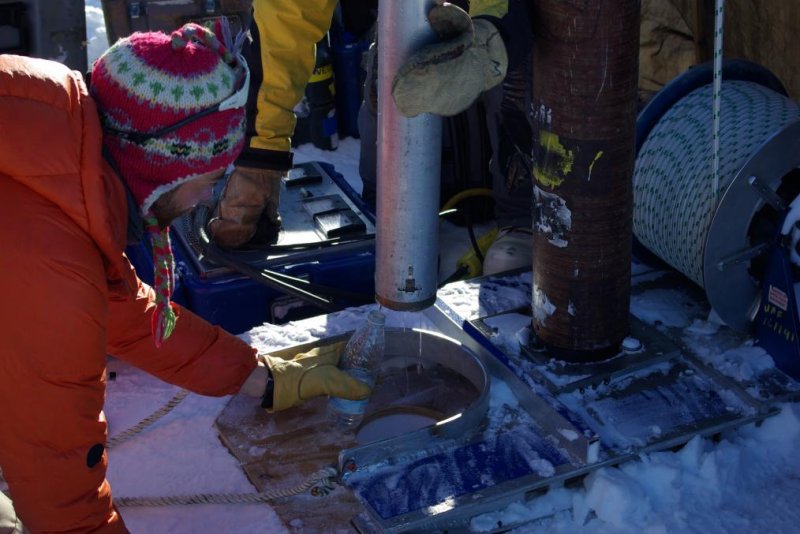Researchers at the University of Utah found water flowing from ice core samples taken from Greenland's ice shelf, revealing a large reservoir of meltwater the size of West Virginia. (Credit: University of Utah)
A large reservoir of melt water, larger than the state of West Virginia, has been found below the surface of Greenland's ice and could help scientists understand the the contribution of snowmelt and ice melt to rising sea levels.
The new aquifer found below the the Greenland Ice Shelf is known as a perennial firn aquifer, because the water remains melted between layers of ice and snow. What has surprised researchers is that the water remains as a liquid and doesn't freeze even in the cold, dark winters of Greenland.
“Although water discharge from streams in winter had been previously reported, and snow temperature data implied small amounts of water, no one had yet reported observing water in the firn that had persisted through the winter” said Rick Forster, lead author and professor at the University of Utah.
The team drilled core samples in 2010 and again in 2011, only to find that two of the four samples taken in 2011 had liquid water pouring off the drill, even though the temperature was -4 °F. One of the samples was taken from a depth of 33 feet and the other was from 82 feet.
The team used airborne radio imagery collected by NASA's Operation IceBridge, ground-penetrating radar and a roving global positioning system to pinpoint the location of this aquifer. The findings were published in the journal Nature Geoscience Sunday.
Researchers found that the water was stored in air spaces between ice particles and not in the airspace between subsurface rock particles -- much like the juice in a snow cone.
“The surprising fact is the juice in this snow cone never freezes, even during the dark Greenland winter. Large amounts of snow fall on the surface late in the summer and quickly insulates the water from the subfreezing air temperatures above, allowing the water to persist all year long,” said Forster.
This kind of water storage hasn't been seen before, with earlier models suggesting that this meltwater either flowed into lakes and rivers eventually running in to the sea or freezing on the ice shelf. But a persistent aquifer could help scientists understand whether the reservoir is helping control the flow of meltwater, or conversely, providing lubrication to glaciers and increasing ice loss.
[University of Utah]
[Nature Geoscience]















